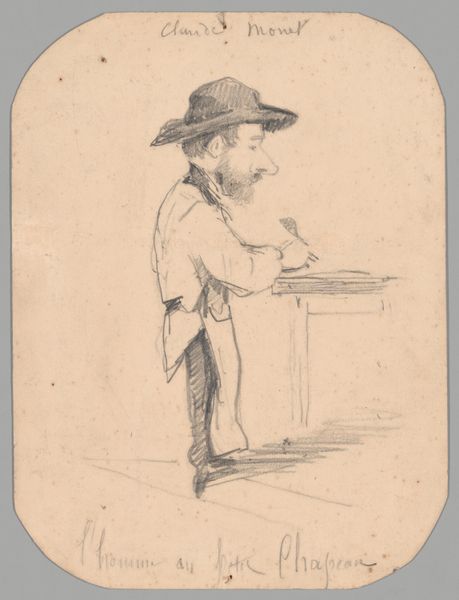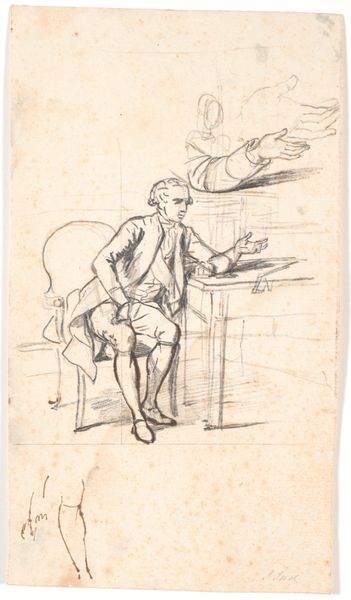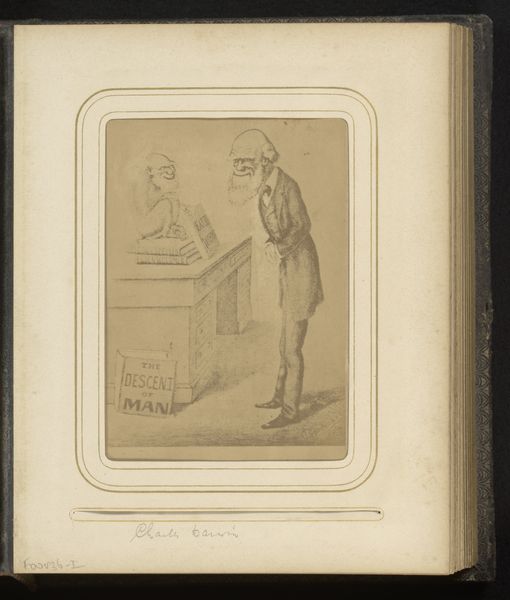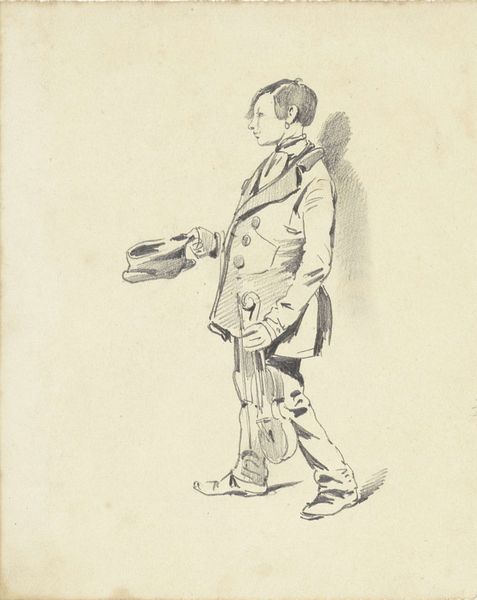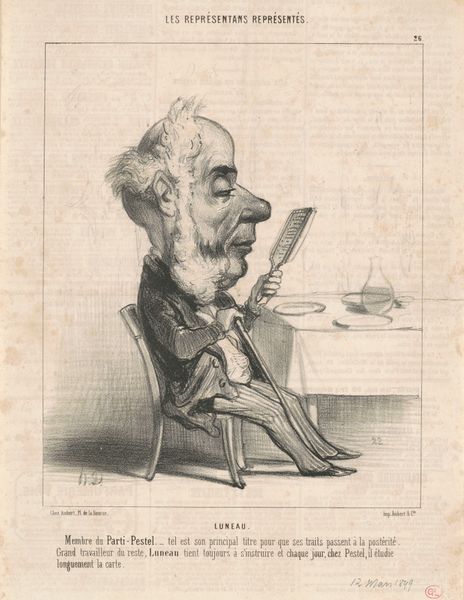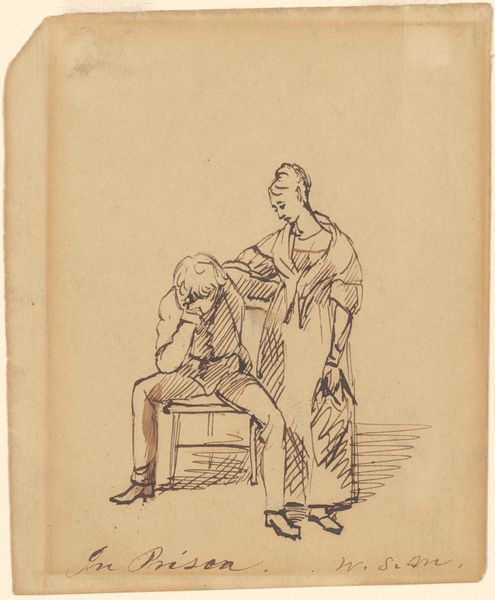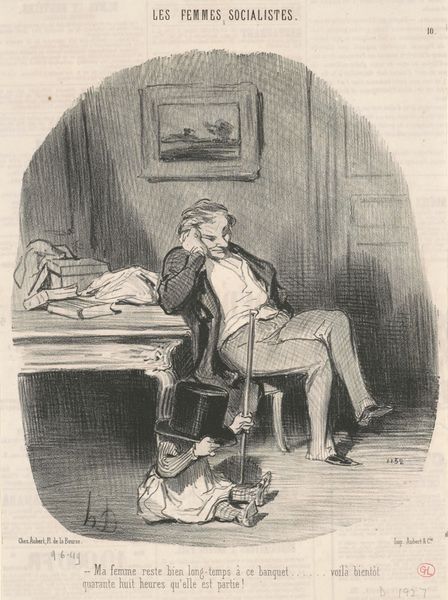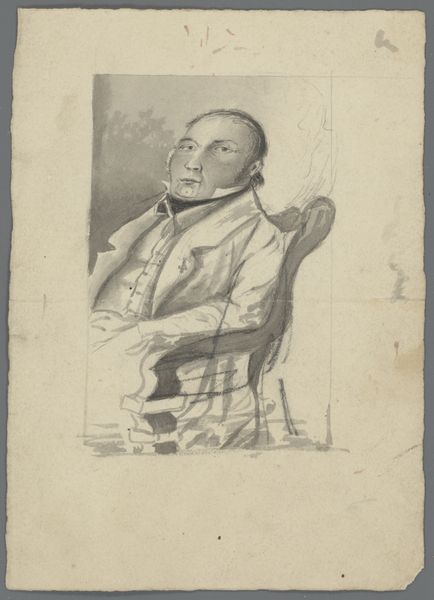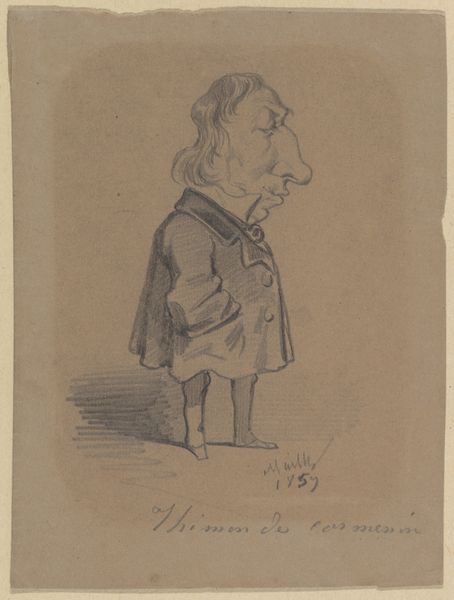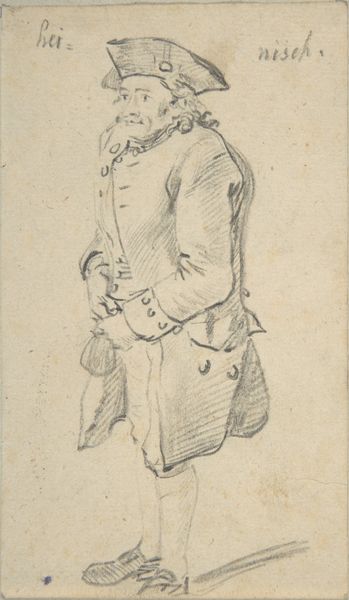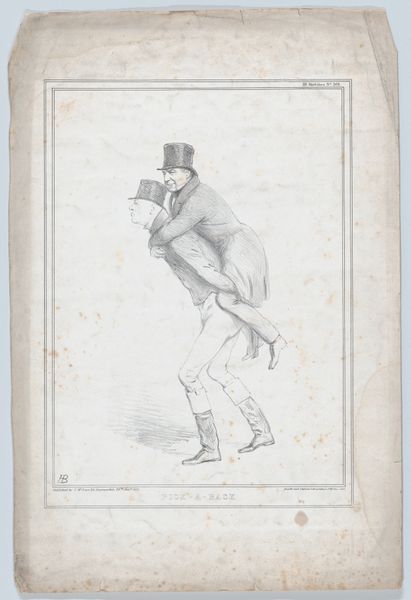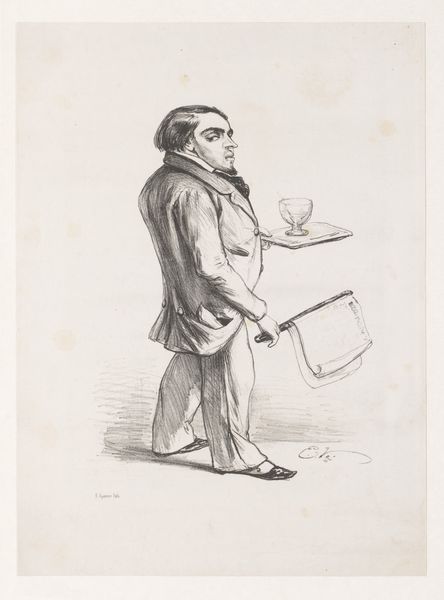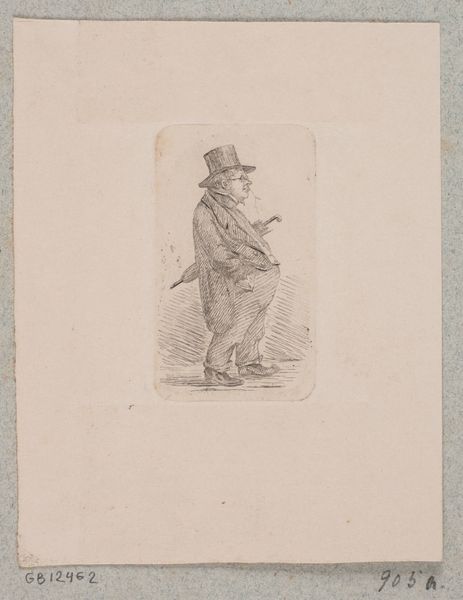
Caricature of a Man Standing by Desk (recto); Sketch of Male Head in Profile (verso) 1855 - 1856
0:00
0:00
Dimensions: 203 × 166 mm
Copyright: Public Domain
Curator: This spirited sketch, “Caricature of a Man Standing by Desk," was created by Claude Monet sometime between 1855 and 1856. He used graphite and pencil to create this work which we are delighted to have here at the Art Institute of Chicago. What do you make of it? Editor: It’s striking! The exaggerated features give it an immediate satirical edge, a commentary perhaps on bourgeois pomposity. The man seems caught mid-lecture or perhaps mid-performance, look at his outstretched hand. Curator: Exactly. Monet made many caricatures in his youth, often depicting local figures. Caricature as an art form was itself evolving at this time, moving from purely satirical expressions toward critical social commentary. One must think of its social reception, especially as photographic portraiture started its rise. Editor: I'm curious about this man’s social status. The exaggerated features almost seem to undermine his authority, to poke fun at it. Curator: Well, his attire suggests a certain social standing. These types of caricatures gained traction as vehicles of social commentary, dissecting public figures and norms. Monet here uses distortion to engage the viewer critically. Editor: I see that. And given that this work precedes his formal entry into Impressionism, doesn't it provide context for his later, more radical works? I mean, this is essentially a study in seeing and representing—albeit through the lens of satire. It is interesting that he had to express his youth through portraits of men… I would want to know more. Curator: Absolutely! Think of the 19th-century art world—institutions, salons, hierarchies. An early engagement with portraiture—even caricature—provides invaluable access and experience, teaching the young artist how to engage an audience with the art, what the expectations might be. I think these early experiments absolutely inform the daring and originality of his mature works. It allowed Monet to gain confidence and perhaps rebel against them with force. Editor: So true. It gives another layer to Monet's revolutionary vision. This early piece makes me ponder the function of art in our world, the impact art could and should have on those that consume it. Curator: For me, it's about context. These lines sketched by a young artist allow a better reading of Impressionism later on. Editor: A fine reading indeed. Thanks.
Comments
No comments
Be the first to comment and join the conversation on the ultimate creative platform.
